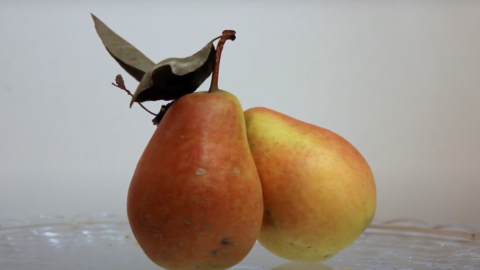Crunchy and grainy, very fragrant. And the noble pear of Parma, an almost lost variety – exquisite on the palate and with great benefits for the body – that only the hard work of recovery has allowed to bring back into vogue. “It is a fruit that was known only to the elderly – says Mauro Carboni, Slow Food coordinator of the Presidium -. But we want to preserve and reinvigorate the knowledge of local territories and traditions. The noble pear, with its wealth of history and culinary traditions, deserves a future in which it is properly valued". In fact, the noble pear was awarded the recognition "Slow Food Presidium”, which celebrates the work of recovering an almost forgotten variety and the commitment of a community to preserve and disseminate a product that maintains a strong link with the territory and traditional cuisine.
Many will not know it, but in Parma it is famous for two reasons. Not only is it the main ingredient of the Tortel dols from Colorno, a typical dessert of the Parma area (tortelli with a sweet filling made with pears, quinces and pumpkin, a classic of the local cuisine), but it is also the main ingredient of the mostarda of the same name, the Nobleman of Parma.
The origins of the noble pear
Difficult to go back to origins of this variety. In the province of Parma, the first historical evidence can be found in the frescoes of the castles built by the leader Pier Maria Rossi, datable around the mid-fifteenth century, in which the noble pear appears in its unmistakable form. On the other hand, the first bibliographic evidence dates back to the eighteenth century, contained in an anonymous Parma manuscript in which the noble pear is described as an "elongated, zalletto, a little rosy, with a thin skin, delicate flavor" fruit.
But it was only in the XNUMXth century that the noble pear established itself definitively: thanks also to the duchess Marie Louise of Austria, the good duchess as she is called in the area, who seems to have been a great admirer of this fruit.
But that wasn't enough to ensure its survival: the area where pear trees once grew has changed in appearance. The spread of monocultures down below and the depopulation and unmanaged reforestation of the mountain have brought the noble pear to the brink of extinction. But how did we get to the rediscovery of this almost forgotten ancient fruit?
A team effort to restore nobility to this pear
Almost ten years ago, Matthew Ghillani, coming across a noble pear tree that had been dry for years, on the advice of the village elders, he decided to restore a field of pear trees. Matteo, together with his partner Simona, then decided to give life together with three other companions to the official garrison on the Parma Apennines to restore vitality to this precious fruit.
Today there are about 300 specimens of noble pear trees but adding the other manufacturers as well, you can easily exceed a thousand units.
Uses of the noble pear in the kitchen
The noble pear is hard to eat as soon as it is picked. It is in fact a variety to be cooked, in wine or in water. It is used for the filling of Tortel dols or transformed into mostarda (Nobile di Parma) to be eaten in combination with cheeses (excellent with mountain Parmigiano Reggiano) or meats.
In addition to the Tortel dols and the Nobile di Parma, the noble pear in the mountainous areas of the Reggio area are combined with the preparation of savurett, a pear compote obtained after rather prolonged cooking. But besides traditional recipes, this type of pear can be used to create many dishes, not only sweet but also savory. As in a salad with potatoes or chestnuts, or with croutons with walnuts, ricotta and pears; the risotto with pears and walnuts and the pork tenderloin with pears are also tasty.





